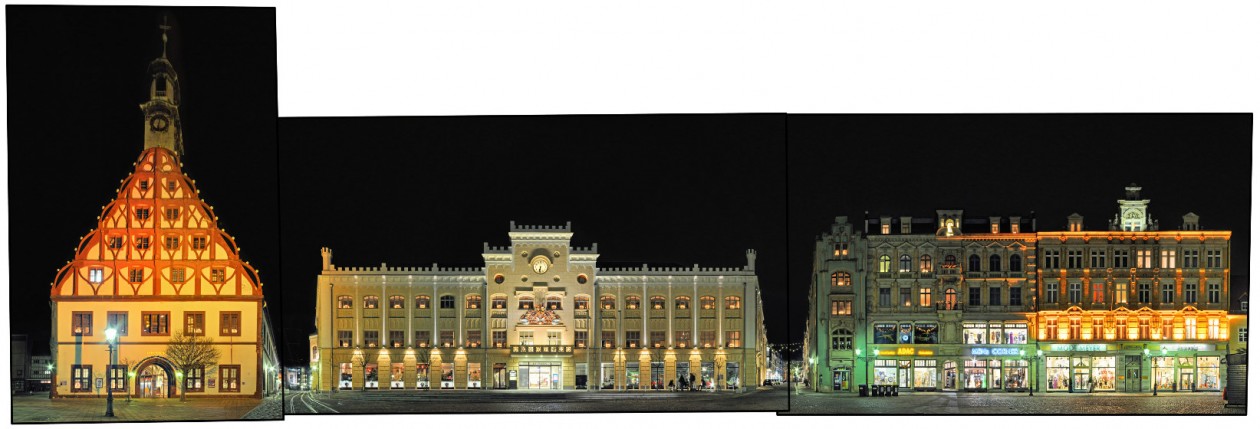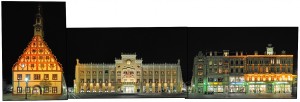Zwickau, founded in the 12th century, lies 60 km south of Leipzig and about 150 km northwest of Prague at the foot of the ore mountains [german: Erzgebirge], 4th largest city in the german state Saxony and 88th largest city in Germany (2014).
Population: 91.000 (2014) | 122.000 (1988) | 85.000 (1930) | 56.000 (1900)
Zwickau quickly gained importance after its foundation and was a free imperial city in the early 14th century. Besides Wittenberg it was an early centre of the Lutheran Reformation. From the 15th to the 20th century Zwickau was a centre of the mining industry in Germany, especially for hard-coal from Zwickau and silver from the ore mountains. Hence the city played an important role in german industrialisation and was for centuries one of the main economic and cultural centres of Saxony. It is also a cradle of the german automobile industry with Audi and Horch being founded in the city, while during the GDR times it was the city of the Trabant, the most well known car of the eastern bloc.
Here we see a night view in christmas lighting of the southern side of the main market square (Hauptmarkt), which includes two of the cities main buildings, the Gewandhaus on the left and the town hall in the centre. The Gewandhaus (cloth merchants‘ hall) was built in the 16th century and today serves as the main theatre of the city. The town hall was built in 1404 and features the elaborate city emblem above its portal. The last building on this side of the square on the far right, which was unfortunately hidden by christmas stalls for this photography, is the birthplace (and museum) for the famous composer Robert Schuhmann.
Visit our archive for other streetline panoramas from Saxony.
Click for larger view:
For classic view (english link):




